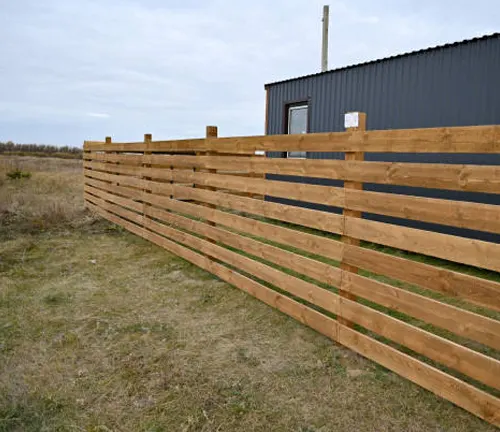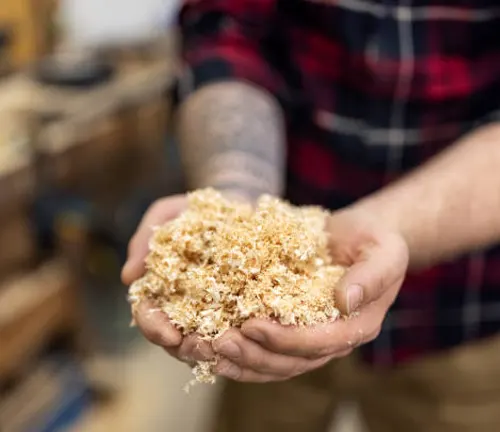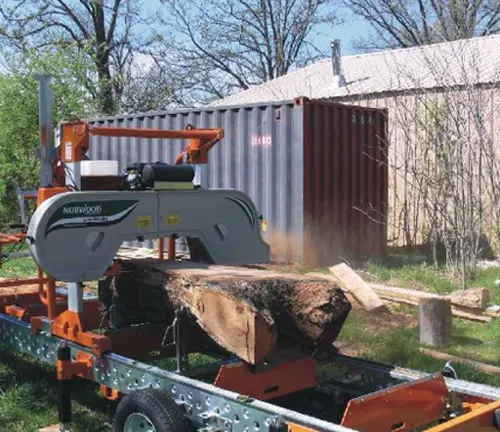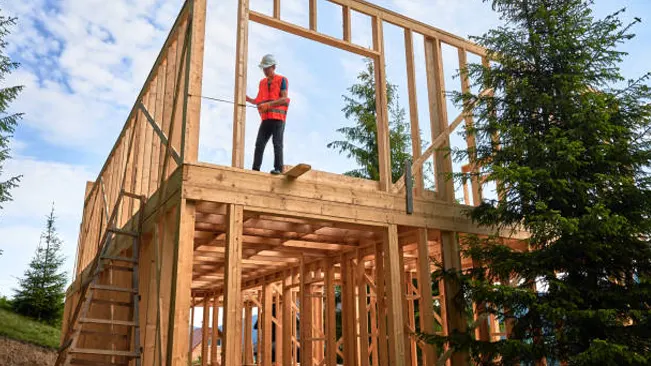How to Make Money With a Sawmill?
- February 7, 2025
- 0 comment
Running a sawmill can be much more than just a hobby it’s a business with the potential to generate a substantial income when approached correctly. Whether you already own a sawmill or you’re considering starting one, understanding the different ways you can turn your investment into profit is crucial for success.

There are several methods you can use to make money with a sawmill. By exploring these options and applying the right strategies, you’ll be able to maximize your returns. Let’s dive into the specifics of how you can achieve this.
Things You Can Do to Make Money With a Sawmill
1. Custom Milling Services: The Simple Way to Start Earning
One of the easiest ways to start making money with a sawmill is by offering custom milling services. If you live in a rural area or a place where landowners need wood processed but don’t have the equipment to do it themselves, you’re in luck. These folks are often looking for someone with the right tools and expertise to turn their logs into usable lumber.
People bring their logs to you, and you charge them for milling the logs into boards, usually per board foot or based on log size. This method requires minimal investment and meets the steady demand for custom-sized lumber.

The real advantage here is that you’re not spending any money upfront on buying raw materials—your clients provide the logs, and you provide the service. Plus, once you build relationships with local builders, contractors, and even farmers, you can get repeat business.
2. Selling Finished Lumber: The Bigger Picture
If you want to step up your game, you can start producing and selling finished lumber. Instead of just providing milling services, why not sell lumber that you’ve processed yourself? There’s a good market for finished lumber, whether it’s for construction, furniture making, or even hobby projects like cabinetry or woodworking.
To succeed in selling finished lumber, you need to understand your local market’s demands. Builders typically want standard construction materials, while woodworkers prefer high-value species like walnut or oak, which you can sell at a premium to boost margins.

One more thing to keep in mind: try to form connections with local businesses or even hobbyists. The stronger your network, the easier it will be to move your stock.
3. Producing Value-Added Products: Move Beyond Just Lumber
Another great way to boost your sawmill profits is by producing value-added products. What do I mean by value-added? Basically, you take your lumber and turn it into something even more useful—like flooring, furniture, fence posts, or even decorative pieces.
By doing this, you can charge much more than you would for raw lumber. If you’re serious about increasing profits, consider investing in a kiln.

Kiln-dried lumber is way more stable and sells for a higher price than air-dried wood, plus it lets you tap into markets that need high-quality materials for things like furniture or flooring.
4. Selling Byproducts: Turn Waste into Profit
You might be surprised, but sawmills produce a lot of byproducts that you can actually sell. Things like sawdust, wood chips, and offcuts don’t have to go to waste—they can be a source of extra income.
Sawdust and wood chips, for example, are in demand by paper mills, particleboard manufacturers, and even farmers who use them for animal bedding.

And don’t forget about firewood. The offcuts and smaller pieces left over from milling can be bundled and sold as firewood or kindling, especially during the colder months. Selling these byproducts not only helps you make money but also cuts down on waste, which is a win-win situation.
5. Mobile Sawmill Services: Go Where the Work Is
If you’re willing to take your sawmill on the road, offering mobile sawmill services is a fantastic way to expand your customer base. Instead of having people bring their logs to you, you take your mill to their location.
This can be especially useful for customers who have large logs or remote properties that are difficult to access. Mobile sawmills allow you to charge premium rates because you’re providing an extra level of convenience to your clients.

Many people are willing to pay more to have someone come to their property and mill logs on-site, saving them the hassle and cost of transporting heavy timber.
6. Catering to Niche Markets: Think Small, Earn Big
There’s a growing demand for specialty lumber and unique wood products, particularly among artisans, woodworkers, and DIY enthusiasts. If you’re producing live-edge slabs, specialty cuts, or exotic hardwoods, you can target a niche market that’s willing to pay higher prices for premium wood.
For example, live-edge wood is trendy for furniture making, and you could sell it to high-end furniture makers or hobbyists. Similarly, if you’re milling unique or rare species, you’ll find that these types of wood fetch a good price in markets that value quality over quantity.

Here’s another idea:
Selling Online: While your local market might be limited, an online store opens up your products to a national or even global audience. Specialty woods, in particular, can sell well online, as you’ll be able to connect with buyers from all over who are looking for specific types of wood that might not be available in their region.
7. Partnering with Local Builders or Developers: Secure Large Contracts
One of the best ways to secure a steady income stream is by partnering with local builders or developers. Construction projects, especially larger ones like housing developments or commercial buildings, require a lot of wood. If you can establish a contract with local builders to provide them with lumber, it can provide consistent business.

Another opportunity lies in marketing your sawmill as eco-friendly, especially if you practice sustainable logging. More developers and builders are looking for sustainable and responsibly sourced wood, so if you can offer that, you may have a competitive advantage.
8. Timber Sales and Processing: Buy, Process, and Resell
If you have access to forests or can purchase logs, another strategy is to buy timber, process it into lumber, and resell it. This can be a more significant investment but offers larger returns, especially if you’re processing high-quality logs.
Many sawmill owners find success in buying logs in bulk, processing them into finished lumber, and selling to wholesalers, retail lumber yards, or directly to consumers. You can also consider exporting your lumber to other regions where there’s high demand for wood products.
9. Workshops and Training: Teach Others and Earn Extra Income
If you’ve been running a sawmill for a while and know the ins and outs of the business, why not share that knowledge? You can host workshops or training sessions to teach others how to run a sawmill, operate specific machinery, or properly grade lumber.
This can be a profitable side business, especially since more people are interested in self-sufficiency, woodworking, and even running their own sawmills. You can charge for these hands-on experiences and provide valuable guidance to aspiring sawmill owners or hobbyists.
Conclusion
Running a sawmill can be a lucrative business if you diversify your services and think strategically about how to maximize your profits. Whether you’re offering custom milling, selling lumber, or producing value-added products, there are plenty of ways to generate income. Don’t forget to explore niche markets, partner with local builders, and sell byproducts to get the most out of your resources.
So, what are you waiting for? With the right approach and some careful planning, you can turn your sawmill into a thriving, profitable business.
Frequently Asked Questions (FAQ’s)
- What is the easiest way to start making money with a sawmill?
Offering custom milling services, where clients bring their logs to you, is a simple way to start generating income. - How can I increase profits from selling lumber?
Focus on processing high-demand or specialty woods like oak or walnut and sell directly to builders, woodworkers, and hobbyists. - What are value-added products in the sawmill business?
Value-added products include items like furniture, flooring, or kiln-dried lumber, which can sell for a higher price than raw lumber. - How do I make money from sawmill byproducts?
Sell sawdust, wood chips, and offcuts to paper mills, farmers, or as firewood and kindling. - What is a mobile sawmill, and how can it increase profits?
A mobile sawmill allows you to bring your services directly to customers, letting you charge higher rates for on-site milling. - How can I cater to niche markets with my sawmill?
Sell specialty wood like live-edge slabs or exotic hardwoods to artisans, furniture makers, and online buyers who are willing to pay more for unique lumber. - How can I secure long-term business with my sawmill?
Partnering with local builders or developers for large construction projects can provide a steady stream of income. - What are the benefits of offering workshops and training?
You can share your knowledge by hosting paid workshops on sawmill operations, grading, and woodworking, generating extra income. - How can I reduce costs and maximize efficiency in my sawmill?
Invest in high-quality equipment, maintain your machinery, and streamline your workflow to reduce time and labor costs. - What should I do with logs that aren’t suitable for high-end products?
Logs that aren’t high-grade can still be used for construction-grade lumber or turned into wood chips, pulp, or firewood to avoid waste and increase revenue.

Benjamin Brooks
Forestry AuthorGreetings! I'm Benjamin Brooks, and my journey over the past 15 years has revolved around the fascinating realms of content creation, expertise in snow clearing, and the intricate world of lumberjacking and landscaping. What began as a simple curiosity about the natural world and heavy machinery has evolved into a passionate profession where my love for crafting words intertwines seamlessly with my lumberjacking and garden skills.













Leave your comment